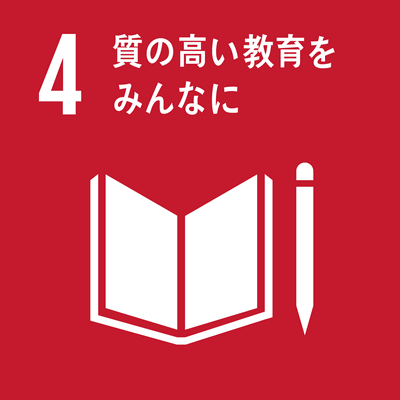シラバス表示
シラバスの詳細な内容を表示します。
→ 閉じる(シラバスの一覧にもどる)
科目の基本情報
| 開講年度 | 2023 年度 | |
|---|---|---|
| 開講区分 | 工学研究科(博士前期課程)電気電子工学専攻 | |
| 領域 | 主領域 : E; 副領域 : F | |
| 受講対象学生 |
大学院(修士課程・博士前期課程・専門職学位課程) : 1年次 |
|
| 選択・必修 | ||
| 授業科目名 | 誘電体工学PBL演習 | |
| ゆうでんたいこうがくぴーびーえるえんしゅう | ||
| Problem Based Learning Seminar in Dielectric Materials | ||
| 単位数 | 2 単位 | |
| ナンバリングコード | EN-EMAT-5
|
|
| 開放科目 | 非開放科目 | |
| 開講学期 |
後期 |
|
| 開講時間 |
木曜日 1, 2, 3, 4時限 |
|
| 授業形態 |
対面授業 * 状況により変更される可能性があるので定期的に確認して下さい
「オンライン授業」・・・オンライン会議ツール等を利用して実施する同時双方向型の授業 |
|
| 開講場所 | 電気電子棟3F1316室 | |
| 担当教員 | 青木 裕介(工学研究科電気電子工学専攻) | |
| AOKI, Yusuke | ||
| SDGsの目標 |
|
|
| 連絡事項 | * 状況により変更される可能性があるので定期的に確認して下さい |
|
学修の目的と方法
| 授業の概要 | この演習は,「誘電体工学特論」と密接に関係し,固体物性をより深く習得することを目標としている。固体物性に関する英語の文献を題材に輪講形式で演習を行う。 (Course description/outline) This seminar course is deeply related to the course "Dielectric Materials", and aims at achieving deep understanding of solid state physics. The course proceeds by giving lectures in turn by graduate students themselves on articles on solid state physics written in English. |
|---|---|
| 学修の目的 | 固体材料の電子的・光学的・磁気的物性を決定する固体のバンド構造と電子の振る舞いについての理解を深める。 (Learning objectives) Obtain deep understanding on the band structure of solids and behaviors of electrons in them which determine the electronic, optical, and magnetic properties of solid state materials. |
| 学修の到達目標 | 電気電子工学に用いられている材料の性質を基本から理解できる。さらに、自主的に学習する能力、深く理解する能力、研究へ応用する能力を身に着けることができる。 (Achievements) Understand basic characteristics of materials used in electrical and electronic engineering. Furthermore, acquire ability to study by their own, ability to deeply understand, ability to apply new knowledge to their own researches. |
| ディプロマ・ポリシー |
|
| 成績評価方法と基準 | レポート100%。ただし出席も重視し、5回以上欠席は不可とする。 (Grading policies and criteria) Grades are based on students' reports. However, attitudes to the class are also considered, and those who does not attend to the class more than five times will fail. |
| 授業の方法 | 演習 |
| 授業の特徴 |
Moodleを活用する授業 その他、能動的要素を加えた授業(ミニッツペーパー、シャトルカードなど) |
| 授業改善の工夫 | |
| 教科書 | |
| 参考書 | (Reference materials) John Singleton, "Band Theory and Electronic Properties of Solids" Oxford Univ. Press |
| オフィスアワー | 毎週金曜日12:00~13:00,電子情報棟3階1315号室 (Office hour) Fri 12:00~13:00, office |
| 受講要件 | 「誘電体工学特論」を履修済みであることが望ましい。 |
| 予め履修が望ましい科目 | 誘電体工学特論 (Courses encouraged to take in advance) Dielectric Materials |
| 発展科目 | |
| その他 |
授業計画
| MoodleのコースURL |
|---|
| キーワード | 固体物理 バンド理論 分光学 光学 フォトニック結晶 メタマテリアル 電気電子材料 |
|---|---|
| Key Word(s) | solid state physics, band theory, spectroscopy, optics, photonic crystal, metamaterial, electric and electronic materials |
| 学修内容 | 第1回 ガイダンス 第2回 Metals: the Drude and Sommerfeld models 第3回 The quantum mechanics of particles in a periodic potential: Bloch's theorem 第4回 The nearly-free electron model 第5回 The tight-binding model 第6回 Some general points about bandstructure 第7回 Semiconductors and Insulators (1) Bandstructure of semiconductors 第8回 Semiconductors and Insulators (2) photoconductivity 第9回 Bandstructure engineering 第10回 Measurement of bandstructure 第11回 Transport of heat and electricity in metals and semiconductors 第12回 Magnetoresistance in three-dimensional systems 第13回 Experimental considerations in measuring resistivity and Hall effect 第14回 Inhomogeneous and hot carrier distributions in semiconductors 第15回 Phonons 第16回 Superconductivity |
| 事前・事後学修の内容 | 演習にて使用する文献については、自分の研究内容に直接関係していなくとも予習・復習として熟読し、深く理解することを心がける。 輪講を担当した学生は担当箇所を他の学生にも理解させるように努めること。 |
| 事前学修の時間: 事後学修の時間: |

